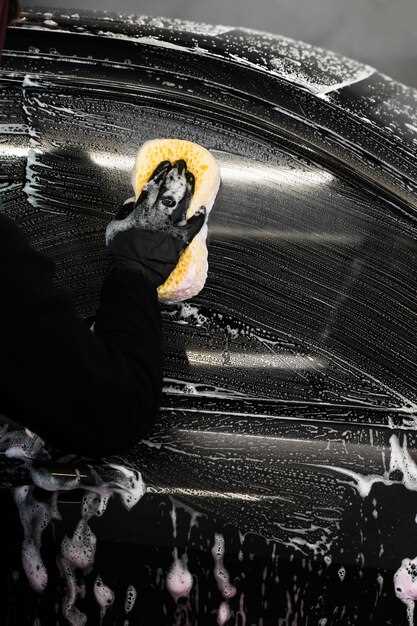
After a fresh paint job, the excitement of owning a newly polished vehicle can be overwhelming. However, it is crucial to understand how to care for your newly painted surface properly. Gentle washing techniques are essential to preserve the integrity of the paint while it is still in the curing process. Washing your car too soon or too aggressively can lead to irreversible damage, such as swirl marks or scratches.
During the curing phase, which can last several weeks, your car’s paint is still hardening. For this reason, adopting a cautious approach to washing is paramount. The right methods will not only protect the aesthetics of your car but also enhance the longevity of the paint job.
In this article, we will explore safe washing techniques specifically tailored for freshly painted cars. From choosing the right products to the ideal washing schedule, these tips will ensure that your vehicle remains in pristine condition while the paint continues to cure.
Understanding the Importance of Curing Time

When it comes to maintaining the pristine appearance of your freshly painted car, understanding the curing process is essential. Curing refers to the time required for the paint to fully harden and bond with the surface. This phase is critical for achieving a durable finish that can withstand environmental elements.
During the curing period, the paint undergoes a series of chemical reactions that enhance its strength and resilience. It is important to avoid washing your vehicle too soon, as this can disrupt the curing process, leading to imperfections such as streaks or dullness.
Opting for a gentle wash after the appropriate curing time will help preserve the integrity of the paint. Using mild soap and soft materials, along with avoiding high-pressure water systems, will ensure that your vehicle’s surface remains undamaged. Adhering to the recommended curing time will ultimately contribute to the longevity and appearance of your car’s finish.
Choosing the Right Materials for a Gentle Wash

When washing your freshly painted car, selecting the appropriate materials is crucial to maintaining its pristine appearance. Using the right tools can prevent scratches and damage, ensuring a gentle wash that protects the finish.
Microfiber towels are a top choice for drying and wiping down surfaces. They are soft, absorbent, and less likely to cause scratches compared to traditional cotton towels. Always opt for a clean microfiber towel to avoid trapping dirt and debris, which can lead to paint swirls.
Additionally, consider using a soft wash mitt made from microfiber or foam. This tool allows for a gentle wash while minimizing the risk of scratching the paint. Avoid using sponges, as they can harbor dirt particles that may scratch the surface during washing.
It is also essential to choose a pH-balanced car wash soap. This type of soap is specifically formulated to be gentle on your vehicle’s paint and clear coat, ensuring that all contaminants are removed without compromising protection. Regular soaps, especially those with harsh chemicals, can damage the finish and lead to fading over time.
Lastly, invest in a foam cannon or a spray nozzle with adjustable settings. These tools allow you to apply soap gently while providing good coverage. Using a foam cannon can greatly reduce the amount of scrubbing needed, allowing the soap to do the work and keeping the wash process gentle.
By carefully choosing your washing materials and tools, you will ensure a safe and effective wash, preserving the beauty of your freshly painted car for a long time.
Step-by-Step Guide to Washing Your Freshly Painted Car
Washing a freshly painted car requires careful attention to detail to ensure the paint remains in pristine condition. Follow this guide to safely wash your vehicle without damaging the finish.
1. Wait for the Curing Time: Before washing, allow the paint to cure properly. This process typically takes at least 30 days, but check with your painter for specific recommendations. Washing too soon can lead to damage.
2. Prepare the Washing Area: Choose a shaded area for washing your car to prevent the sun from drying soap too quickly on the surface. This helps avoid water spots and allows for a thorough wash.
3. Gather Supplies: Use a pH-balanced car wash soap, a soft microfiber wash mitt, and multiple buckets (one for soapy water and another for rinsing). Avoid using dish soap, as it can strip wax and degrade paint protection.
4. Rinse the Car: Begin by thoroughly rinsing the car with water to remove loose dirt and debris. Use a hose with a nozzle to control the water flow, ensuring you cover all areas, including the wheels and undercarriage.
5. Wash the Car: Dip the microfiber mitt into the soapy water and start washing from the top down. Work in sections, rinsing the mitt frequently to prevent dirt from scratching the paint. Remember to wash the wheels last to avoid transferring grime back onto the body.
6. Rinse Off Soap: After washing the entire vehicle, rinse it thoroughly with clean water. Ensure all soap is removed, as leftover residues can negatively affect the finish.
7. Dry the Car: Use a clean, soft microfiber drying towel to gently dry the car. Start at the top and work your way down, avoiding circular motions. Pat the surface instead of dragging the towel to prevent scratches.
8. Inspect for Swirls or Scratches: After drying, inspect the paint for any swirls or scratches. If you find any imperfections, consider addressing them with a professional detailer after the paint has fully cured.
By following these steps, you can maintain the beauty and integrity of your freshly painted car while ensuring it looks its best for years to come.






